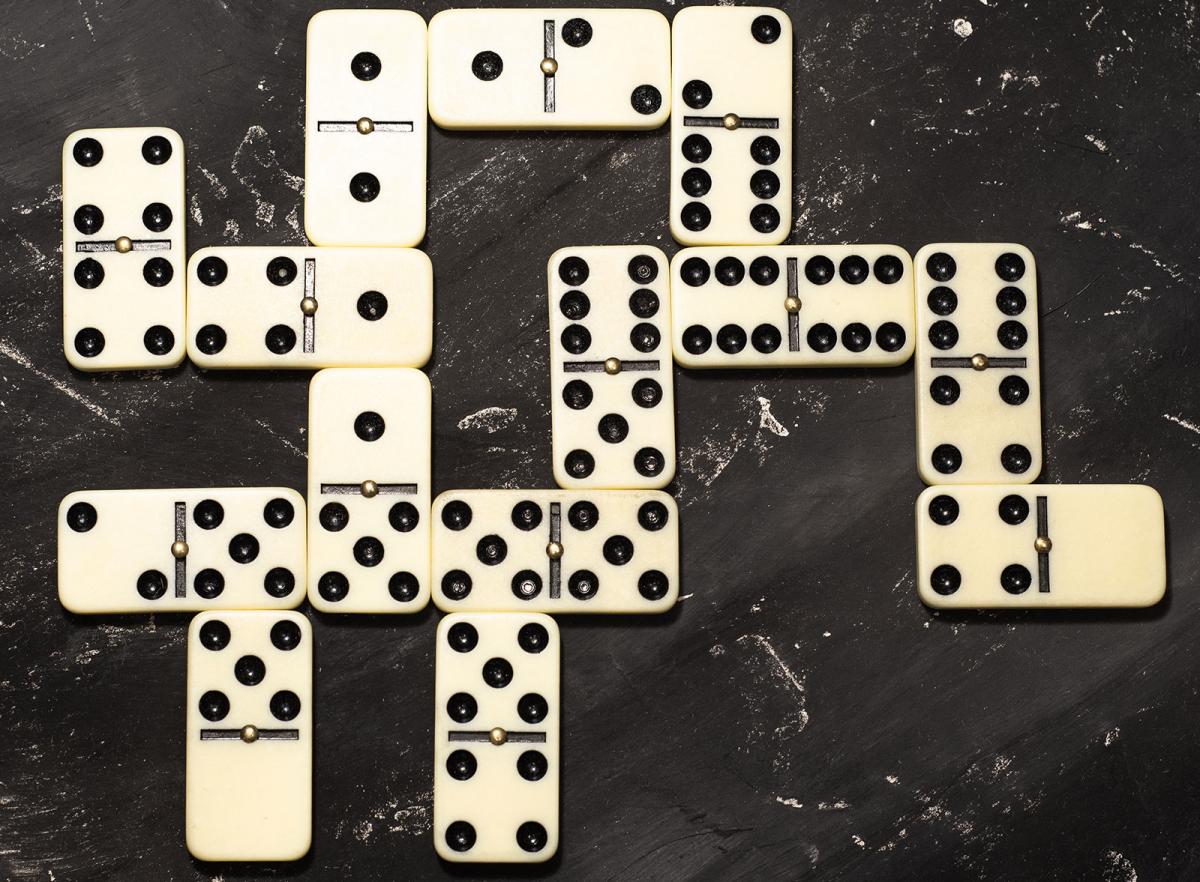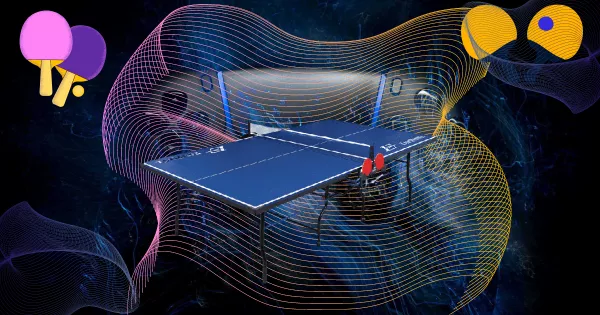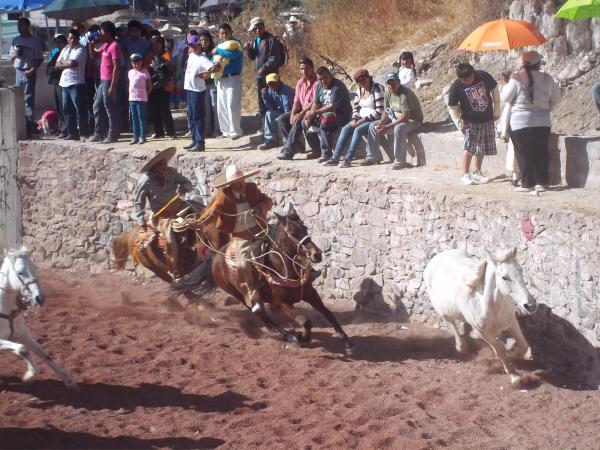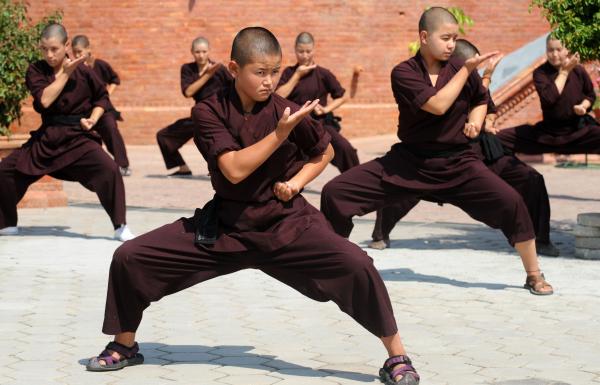Dominoes

Domino, small, flat, rectangular block used as gaming object. Dominoes are made of rigid material such as wood, bone, or plastic and are variously referred to as bones, pieces, men, stones, or cards. Like playing cards, of which they are a variant, dominoes bear identifying marks on one side and are blank or identically patterned on the other side. The identity-bearing face of each piece is divided, by a line or ridge, into two squares, each of which is marked with an arrangement of spots, or “pips,” like those used on a die, except that some squares are blank (indicated in the listing below by a zero). The usual Western set consists of 28 pieces, marked respectively 6-6 (“double six”), 6-5, 6-4, 6-3, 6-2, 6-1, 6-0, 5-5, 5-4, 5-3, 5-2, 5-1, 5-0, 4-4, 4-3, 4-2, 4-1, 4-0, 3-3, 3-2, 3-1, 3-0, 2-2, 2-1, 2-0, 1-1, 1-0, 0-0. Larger sets running up to 9-9 (58 pieces) and even 12-12 (91 pieces) are sometimes used. The Inuit of North America play a domino-like game using sets consisting of as many as 148 pieces. Dominoes originated in China, where dominoes or playing cards—the same word is used for both, and they are physically identical—are mentioned as early as the 10th century. The historical relationship with Western dominoes is as yet unclear. Chinese dominoes apparently were designed to represent all possible throws with two dice, for Chinese dominoes (called “dotted cards”) have no blank faces and are traditionally used only for trick-taking games. Thus, whereas a Western 5-3 is a 5 at one end and a 3 at the other, a Chinese 5-3 is 5 and 3 all over, just as in cards the 5 of clubs is a 5 and a club all over. For this reason Chinese domino games are more comparable to Western card games.














